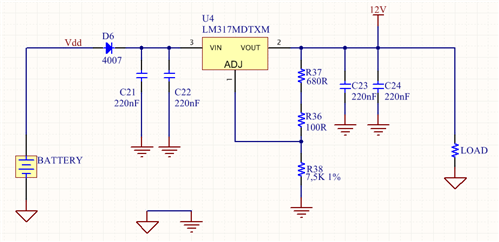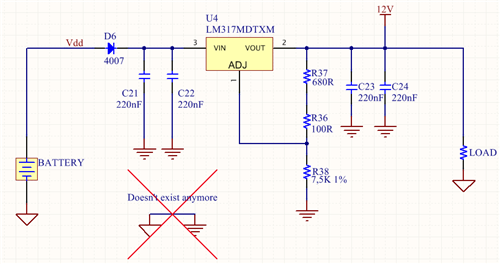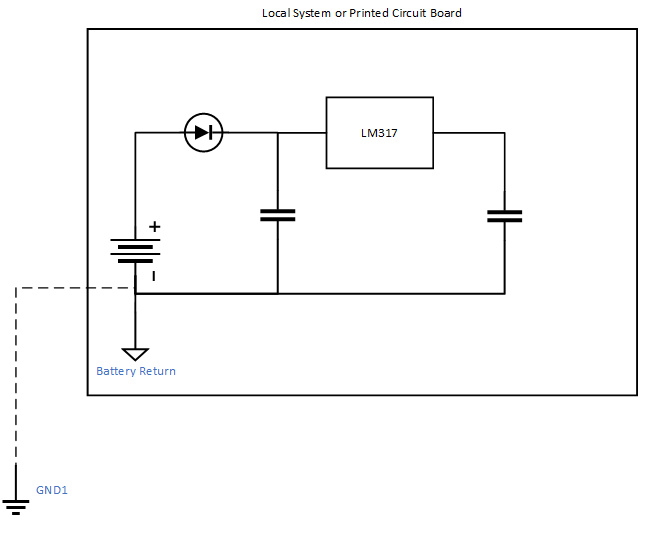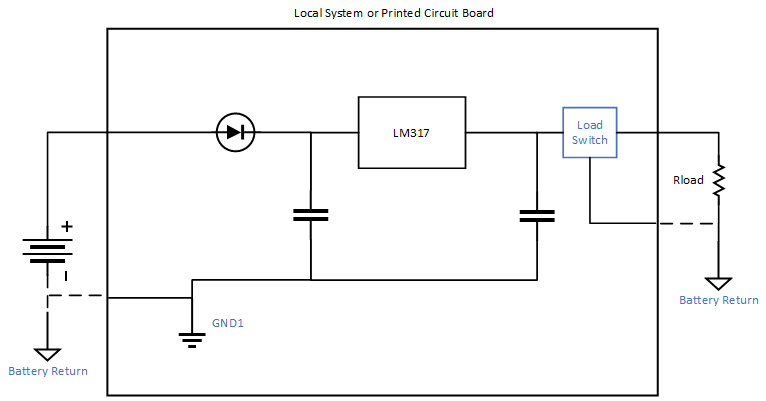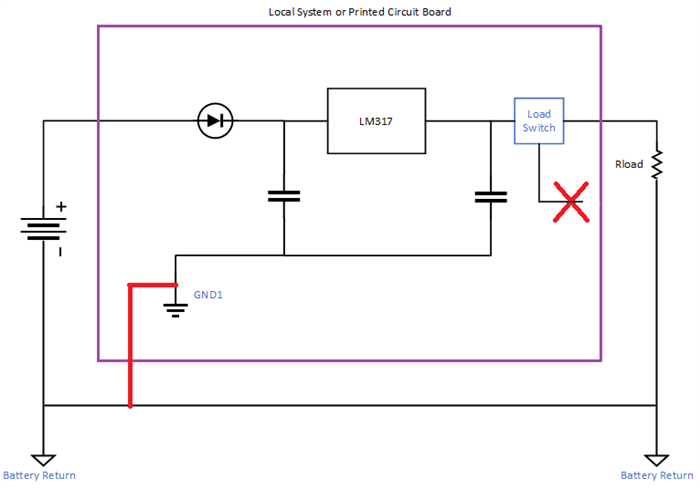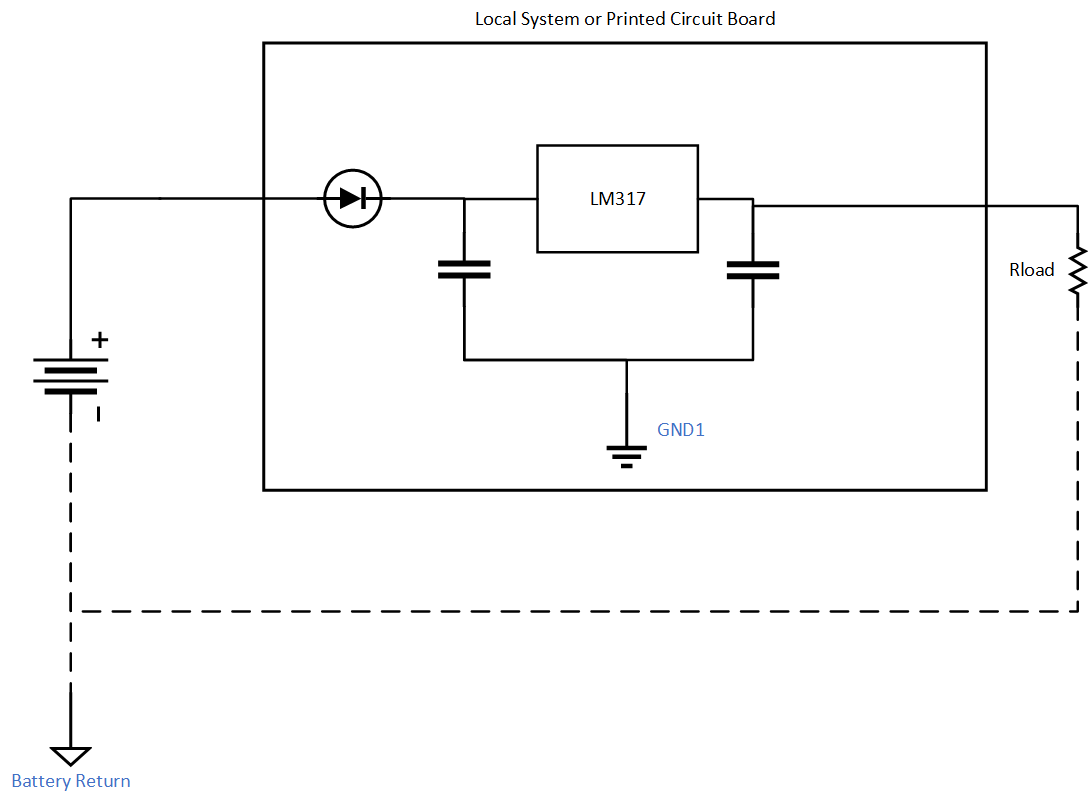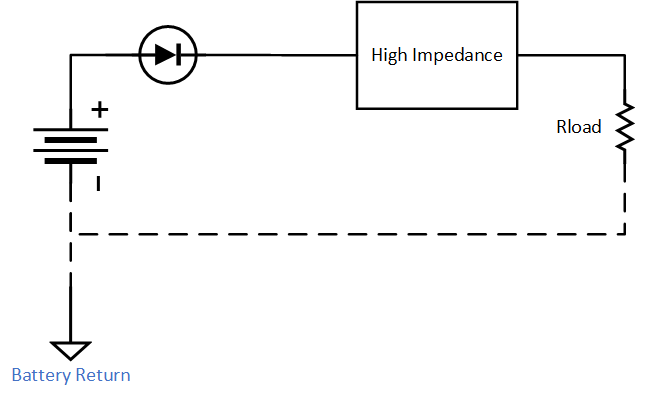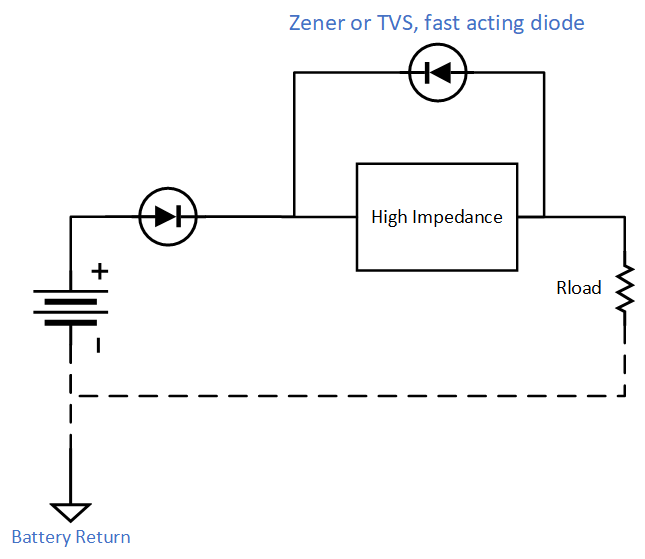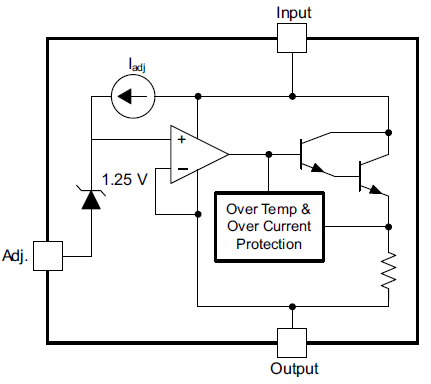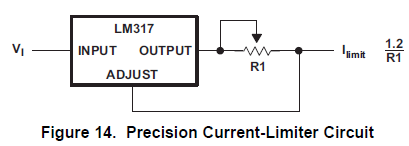I have a product using a LM317 using a simple circuit like below:
It uses a 24V battery as source (between Vdd pin of circuit and ground of circuit), and output is 12V.
When the circuit is working at steady state and loses the connection with battery ground all battery voltage goes to the Load
I need to protect the load under this circunstance.
I thought about 2 option, stop LM317 from conducting or adding a switch at output (Vout pin from LM317), first option I think is not possible and second one I tried a P channel mosfet, it works but it is not fast enough to avoid 24 V at load before it cuts off the output connection.
There is anything I can do to accomplish this need without changing LM317 to another component?


